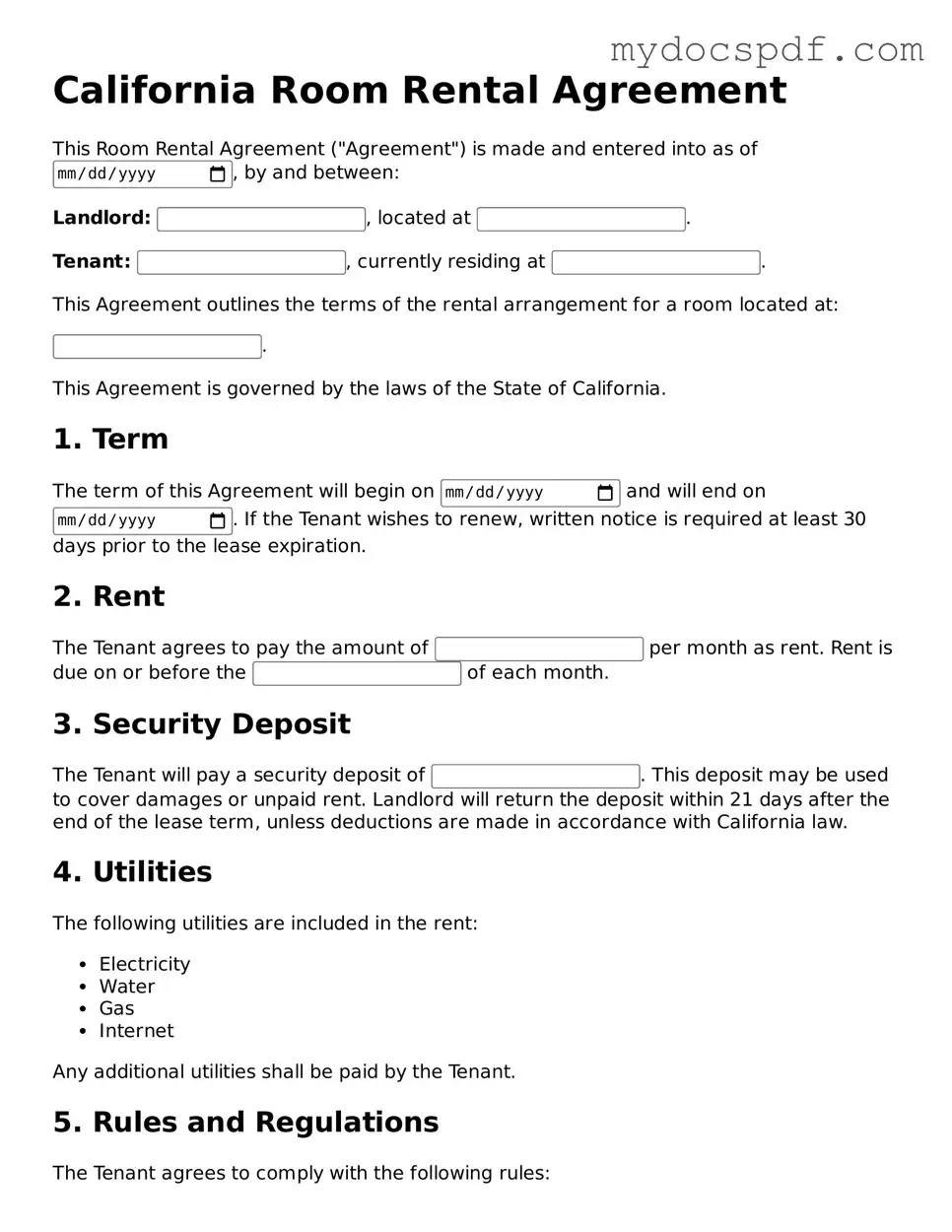Fillable California Room Rental Agreement Document
The California Room Rental Agreement form is a legal document that outlines the terms and conditions under which a room is rented in California. This agreement serves to protect both the landlord and the tenant by clearly defining their rights and responsibilities. Understanding this form is essential for anyone involved in a room rental situation in the state.
Access Editor Here
